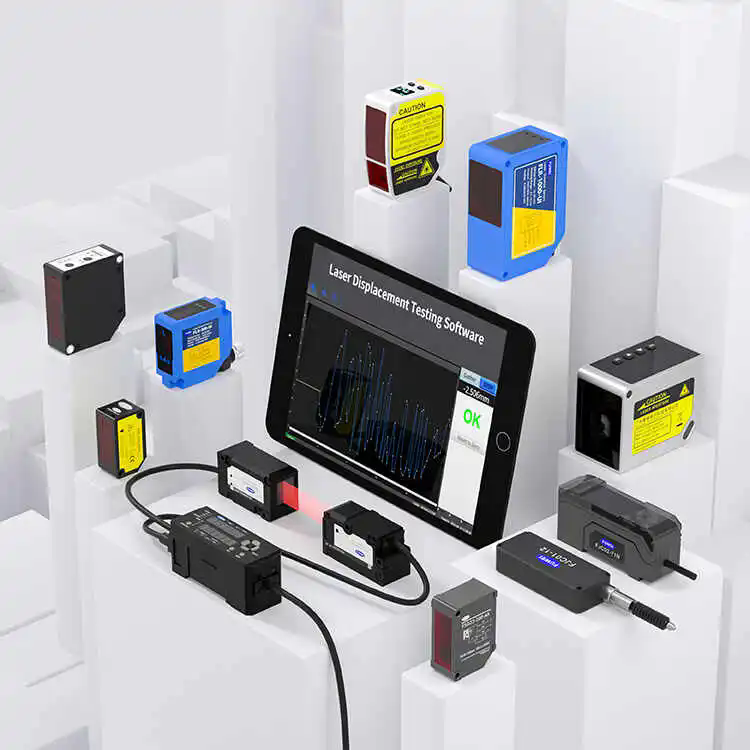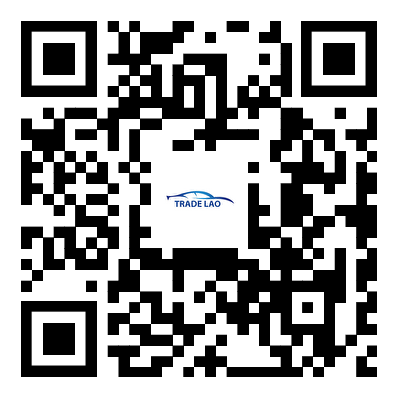What Are Laser Displacement Sensors and How Do They Improve Precision in Manufacturing?
2024-11-14
In today’s highly competitive manufacturing landscape, precision is everything. Whether it's ensuring tight tolerances in parts, monitoring surface quality, or improving overall production efficiency, manufacturers are constantly looking for ways to improve accuracy. One technology that has become indispensable for achieving these goals is the laser displacement sensor. But what exactly is a laser displacement sensor, and how is it transforming industries that demand the highest levels of precision?
In this blog, we’ll explore what laser displacement sensors are, how they work, and why they are becoming a go-to solution in fields ranging from automotive manufacturing to robotics.
What Is a Laser Displacement Sensor?
A laser displacement sensor is a non-contact measurement device that uses a laser beam to measure the distance between the sensor and a target object. The sensor typically emits a laser beam onto the surface of the object, and the reflected light is captured by a receiver in the sensor. By calculating the time it takes for the light to travel to the target and back, or by using a triangulation method, the sensor can accurately determine the distance to the object and, in turn, its position, surface profile, or height.
Laser displacement sensors are often used in situations where high precision and non-contact measurements are critical, making them ideal for applications where the object being measured is delicate or in motion, or where traditional mechanical measurement methods are impractical.
How Do Laser Displacement Sensors Work?
Laser displacement sensors operate based on two primary principles: triangulation and time-of-flight (ToF).
1. Triangulation: In this method, the sensor uses a laser beam that reflects off the target surface. The angle of reflection is captured by a photodetector, which allows the sensor to calculate the distance to the target. The triangulation technique is particularly useful for measuring small distances with high accuracy. This type of sensor is often used for precision measurements of surface height, thickness, and displacement.
2. Time-of-Flight (ToF): Time-of-flight sensors calculate distance by measuring how long it takes for the emitted laser pulse to travel to the target and return. This method is typically used in long-range applications. By measuring the round-trip time, the sensor can compute the distance accurately, even over several meters.
Both types of sensors provide fast, highly accurate measurements without the need for physical contact with the target surface, making them ideal for delicate and fast-moving objects.
Why Are Laser Displacement Sensors Important?
1. High Precision and Accuracy
The primary advantage of laser displacement sensors is their ability to provide extremely precise measurements. These sensors can measure down to micrometers, making them ideal for applications that require tight tolerances, such as quality control in manufacturing processes. Unlike traditional measurement tools, which can be affected by physical wear, dirt, or user error, laser sensors offer consistent, repeatable results.
2. Non-Contact Measurement
Because laser displacement sensors do not require physical contact with the target object, they are ideal for measuring delicate materials, such as soft plastics, fragile glass, or thin films. This also makes them suitable for measuring objects in motion or in situations where direct contact could result in damage or wear to the sensor or the object being measured.
3. Speed and Efficiency
Laser displacement sensors offer real-time measurements with high-speed data output. This makes them perfect for high-throughput environments, such as automated assembly lines or quality assurance checks, where fast and accurate measurements are essential to maintaining productivity. The ability to monitor multiple points simultaneously, or over a moving object, further enhances efficiency.
4. Versatility Across Industries
Laser displacement sensors are highly versatile and are used across a wide range of industries and applications. From automotive manufacturing, where they can measure component dimensions and ensure proper fit, to electronics manufacturing, where they are used for inspecting the thickness of thin-film coatings, these sensors offer a level of flexibility that makes them an essential tool in many production lines.
5. Durability in Harsh Environments
Laser displacement sensors are designed to work in environments where traditional measuring devices might fail. Whether it's extreme temperatures, vibration, dust, or moisture, these sensors can continue to deliver reliable performance under a variety of conditions. This robustness makes them ideal for heavy industrial applications, such as measuring materials on factory floors or monitoring equipment in the construction industry.
6. Integration with Automation and Robotics
In modern manufacturing, the need for automation and robotics has grown, and laser displacement sensors are often integrated into automated systems to enhance accuracy and control. These sensors are used in robotic arms to measure object positioning, detect defects, and ensure precise placement during assembly tasks. Their ability to provide real-time feedback makes them crucial for maintaining high standards of automation and robotics.
Key Applications of Laser Displacement Sensors
Laser displacement sensors have found applications in many industries due to their accuracy and versatility. Here are some of the key areas where they are commonly used:
1. Quality Control and Inspection
In manufacturing environments, laser displacement sensors are widely used for quality control and inspection purposes. They are capable of detecting even minute deviations from a desired shape, size, or surface profile, making them crucial for ensuring product consistency and meeting stringent quality standards.
2. Automotive Industry
Laser displacement sensors are integral to the automotive industry, where they are used for measuring parts, monitoring assembly lines, and checking the precision of components. They can measure the thickness of metal sheets, monitor weld seam quality, or check the alignment of parts during assembly. These sensors help improve manufacturing processes by ensuring components fit together perfectly, reducing defects and the need for rework.
3. Electronics Manufacturing
In the electronics sector, where components are often small and delicate, laser displacement sensors are used to measure the thickness of substrates or inspect the surface profile of integrated circuits. Their precision is critical in making sure that electronic products meet rigorous performance and safety standards.
4. Aerospace and Aviation
Laser displacement sensors play a key role in the aerospace industry, where parts must be manufactured to exacting tolerances. These sensors are used to measure complex, high-precision components like turbine blades, fuselage parts, and even entire aircraft assemblies. The non-contact nature of the sensors makes them suitable for use on delicate and highly valuable components.
5. Packaging and Labeling
In the packaging industry, laser displacement sensors are used to measure the size and position of items on production lines. They can check the height of packages, monitor the fill level in containers, or ensure that labels are properly positioned on bottles or boxes. Their speed and accuracy allow for rapid inspection in high-volume production settings.
6. Construction and Civil Engineering
Laser displacement sensors are also used in construction and civil engineering for applications such as measuring soil displacement, monitoring structural shifts, and detecting deformation in buildings or bridges. The sensors' ability to measure distances over large areas makes them ideal for surveying and monitoring infrastructure.
Choosing the Right Laser Displacement Sensor
When selecting a laser displacement sensor, several factors should be considered:
- Measurement Range: Depending on your application, you may need a sensor with a short or long measurement range. Ensure the sensor you choose can measure the distances required for your project.
- Resolution and Accuracy: For highly precise applications, choose a sensor with high resolution and accuracy.
- Environment: Consider the operating environment. Some sensors are designed to withstand harsh conditions like high temperatures, vibrations, or exposure to dust.
- Speed: If you need fast data collection, look for sensors that offer high-speed measurement capabilities, especially for automated systems.
- Output Type: Make sure the sensor’s output type (analog, digital, etc.) is compatible with your system for seamless integration.
Conclusion
Laser displacement sensors have become an indispensable tool for industries that require precise, non-contact measurements. With their ability to offer high accuracy, durability, and speed, these sensors are transforming quality control, automation, and manufacturing processes across various sectors. Whether in automotive production, electronics manufacturing, or civil engineering, laser displacement sensors provide a level of precision and flexibility that helps improve product quality, reduce waste, and increase overall efficiency.
As technology continues to evolve, laser displacement sensors are likely to remain at the forefront of industrial measurement solutions, playing a pivotal role in advancing the future of manufacturing.



